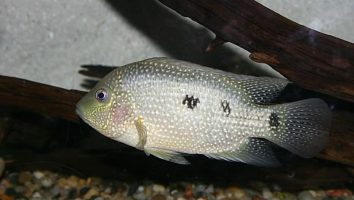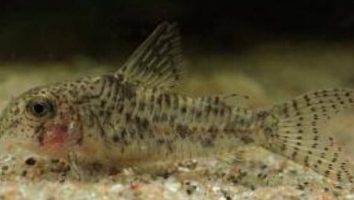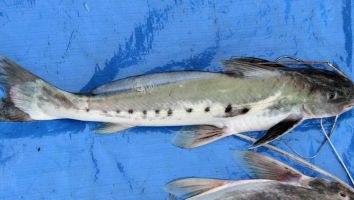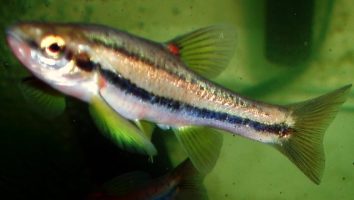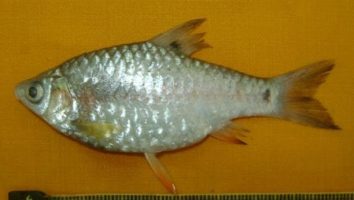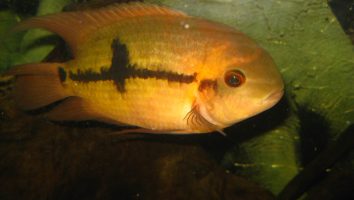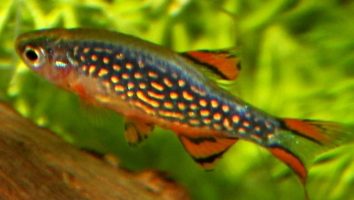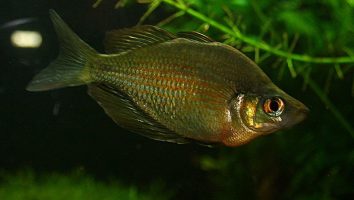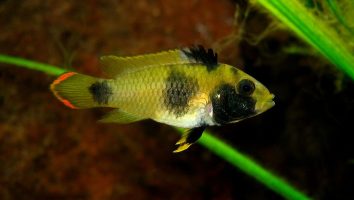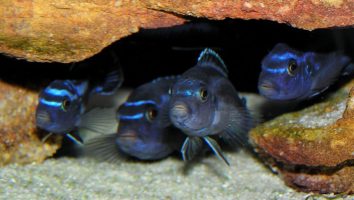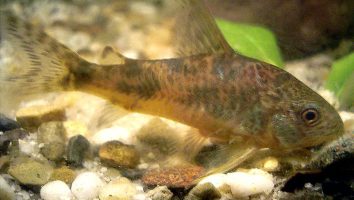The Saulosi is a stunning freshwater fish that is relatively easy to care for.
This species is a member of the cichlid family and is native to Lake Malawi in Africa.
While they are not the most popular cichlid, they are becoming more and more popular due to their unique coloration and easygoing nature.
If you’re thinking about getting a Saulosi, this guide will teach you everything you need to know about their care. Tank size, diet, tank mates, and more!
Table of contents
Species overview
The Saulosi (Pseudotropheus saulosi) is a cichlid that’s found in the southern part of Lake Malawi in Africa. More specifically, they’re located in the upper Shire River near the town of Chilumba.
They are found in rocky areas with a lot of hiding spots and caves. This is something to keep in mind when setting up their tank because they will likely appreciate a lot of rocks and caves to hide in.
The Saulosi is a predator that primarily eats other fish. In the wild, they will eat whatever they can fit in their mouth!
They are a very popular choice for aquariums because of their bright blue and yellow coloration. They are also quite peaceful compared to other cichlids, which makes them a good choice for community tanks.
Appearance
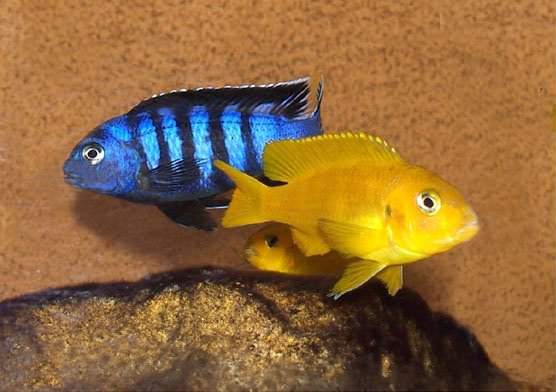
Saulosi are one of the more colorful freshwater fish that you’ll find in the hobby. They have a striking blue color that really stands out (especially against a green background).
This blue color is broken up by a few vertical black stripes that run along their body. The blue color tends to be more faded on the dorsal half of the fish while the ventral half is a bit brighter.
The fins on Saulosi are also very colorful. The dorsal and anal fins are blue with black stripes that match the body pattern. The caudal fin is forked and transparent with a blue hue.
The pectoral fins are clear and the ventral fins are white.
Saulosi have a long and thin body shape that is very similar to other small cichlids. They have a small head with large eyes. Their mouths are slightly upturned which is common in fish that feed on smaller prey.
Lifespan
The average lifespan for a Saulosi is about 5 years. With proper care, they have the potential to live a little longer though.
These cichlids are pretty hearty fish but there are still some things that can shorten their lifespan. Poor water quality is the most common issue but stress from tank mates or a suboptimal diet can also be problems.
Size
The maximum size for a Saulosi cichlid is around 5 inches, with most only reaching about 4 inches in length.
Tank
Tank Size
The recommended minimum tank size for Saulosi is 50 gallons.
Saulosi are a schooling fish, so it’s best to keep them in groups of 5 or more. This means you’ll need an even larger tank if you want to keep a school of these fish.
We recommend a tank size of 75 gallons or more if you want to keep a school of Saulosi. This will give them enough space to swim and explore without feeling cramped.
Water Parameters
The Saulosi cichlid is a freshwater fish that is native to Lake Malawi in Africa. In the wild, they live in waters with a pH of 7.8-8.6, a water hardness of 8-12 dGH, and a water temperature of 76-82 degrees Fahrenheit.
In captivity, it is important to maintain similar water parameters to ensure the health and happiness of your Saulosi cichlid.
- Water temperature: 76-82 degrees Fahrenheit
- pH levels: 7.8-8.6
- Water hardness: 8-12 dGH
- Alkalinity Levels: not applicable
What To Put In Their Tank
Saulosi are a peaceful fish that do best in groups. They are also known to be good jumpers, so a tight-fitting lid is a must.
Saulosi prefer a sandy substrate with some rocks and driftwood for hiding places. Plants are not a requirement, but if you do choose to include them, be sure to use species that can withstand a fair amount of abuse.
Hornwort, water wisteria, and Java moss are all good options.
As for decorations, go with whatever you like. Just be sure to avoid anything that could potentially injure your fish.
Common Diseases
While Saulosi are usually pretty hardy fish, there are still a few illnesses that they’re susceptible to. The most common one is ich, which is a parasite that can infect freshwater fish.
This will show itself as white spots on the body, fish, and gills of your fish. We won’t do a full ich treatment guide here (there are plenty of those online) but it’s something you need to take very seriously if it affects your Saulosi.
Other common diseases include infections (usually of the skin or fins), parasites, and even gastrointestinal issues.
Fortunately, most of these can be prevented by simply keeping the tank clean and the water quality high. A good filtration system is a must, and you should also do regular water changes to keep things fresh.
As long as you take good care of your Saulosi they shouldn’t get sick very often. But if they do, the sooner you act the better. Treat the illness as quickly as possible and consult a vet if necessary.
Behavior & Temperament
The Saulosi is a very peaceful fish that does best in a tank with other peaceful fish. It is a schooling fish, so it is best to keep at least six of them together.
The Saulosi is a bottom-dweller that spends most of its time scavenging for food. It is an omnivore, so it will eat just about anything.
The Saulosi is a very active fish, so it needs a lot of space to swim. It is also a very good jumper, so the tank needs to be covered.
The Saulosi is a very shy fish, so it is best to keep it in a tank with plenty of hiding places.
Tank Mates
The Saulosi is a peaceful and community-oriented fish. As such, they do best when kept with other peaceful fish that occupy different parts of the tank.
This will help reduce aggression and territoriality while also providing adequate stimulation.
Some good Saulosi tank mates include:
- Congos
- Haps
- Peacocks
- Frontosa
- Rainbows
- Tetras
- Danios
Breeding
To breed Saulosi, you will need a spawning tank that is at least 30 gallons in size. The tank should have plenty of hiding places and plenty of live plants. The water temperature should be between 78 and 82 degrees Fahrenheit.
When ready, add two females for every male. The males have more pronounced fins, so they’re easy to spot.
Feed the fish plenty of high-quality foods. Then, begin changing about 50 percent of the water. That should trigger spawning.
You’ll know you’re successful when you see the female deposit eggs on the plants. After she does that, the male will guard them diligently.
The eggs will hatch in about 10 days. You can move the babies into a nursery tank to improve their odds of survival. Feed them mashed peas and other green vegetables until they’re ready to join the adults in your main tank.
Conclusion
The Saulosi is an absolutely stunning fish that is perfect for the intermediate to advanced aquarium keeper.
While they are not the easiest fish to keep, they are certainly not the hardest.
Their unique coloration and patterning is something that will really make your aquarium stand out, and their peaceful nature means they will get along well with most other fish.
If you are looking for a real center piece fish, the Saulosi is a great option. Just be sure to do your research and be prepared to provide them with the care they need to thrive.

